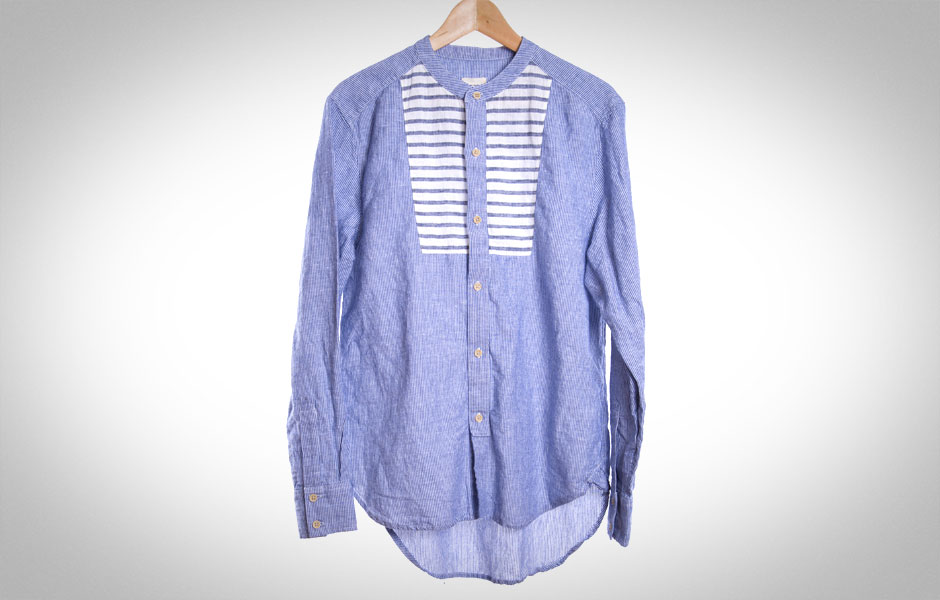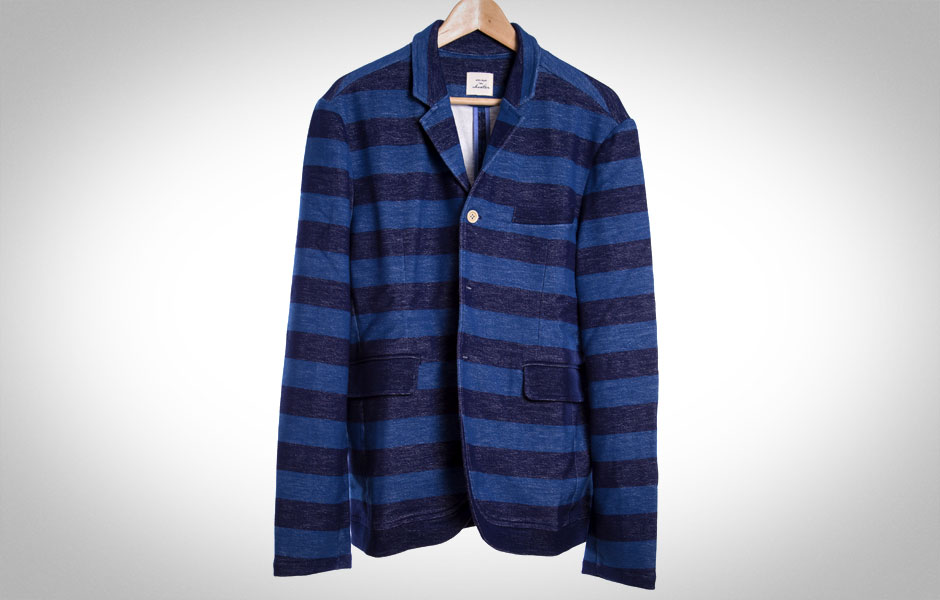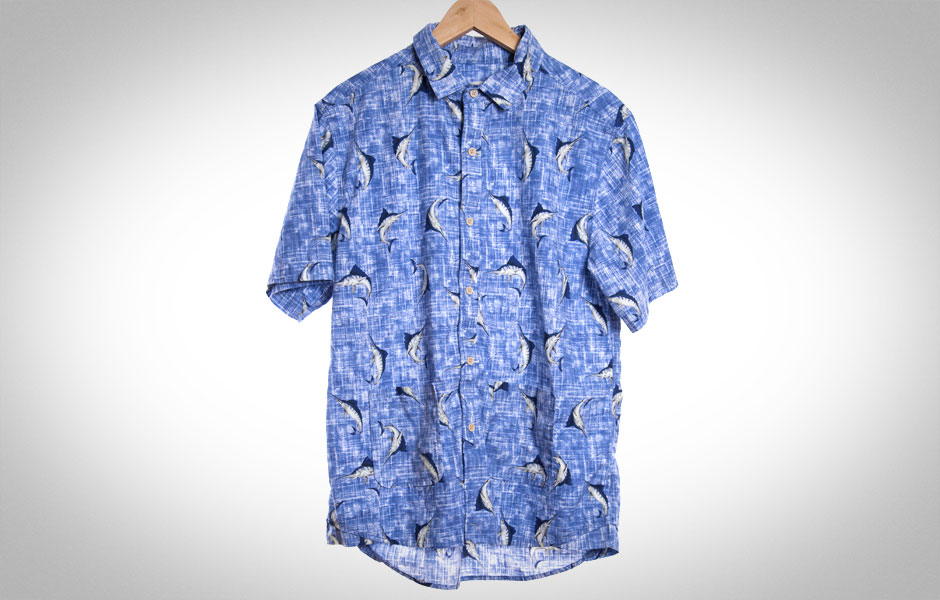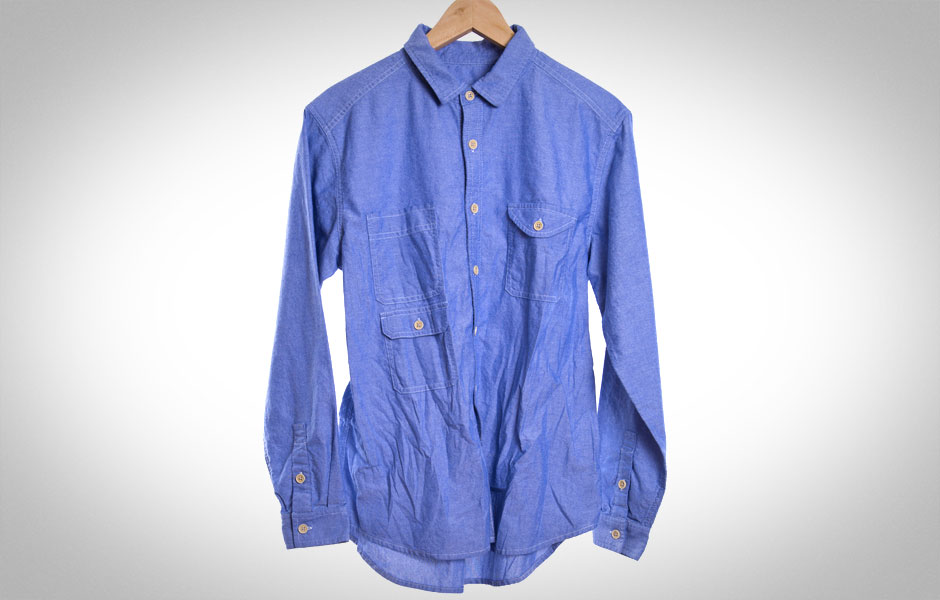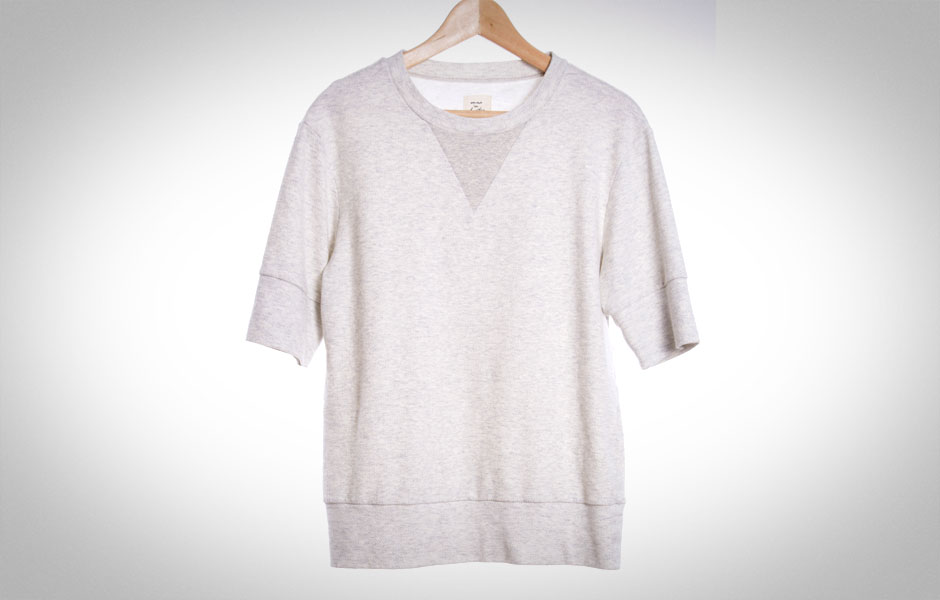- 1. Max ’N Chester
- 2. Max ’N Chester
- 3. Max ’N Chester
- 4. Max ’N Chester
- 5. Max ’N Chester
- 6. Max ’N Chester
It’s hard to convey the specialness of a collection online when so much of its appeal relies on the unique feel and look of its fabrics. Max ‘N Chester is such an animal. Although the pictures of it don’t do it true justice, rest assured that this contemporary brand of tops and bottoms, which was founded by fashion-business veteran Peter Trainor four years ago, is one that should be seen and tried on in person.
Offering easy-care and easy-wear clothing that ranges in price from $98 to $575, the New York-based label designed by this English transplant serves up great-looking pieces that are stylish without being overtly trendy. Trainor uses mostly imported Japanese textiles to construct them. Its spring 2016 collection, which will be released next month, is entirely in blue or white (or both) in a nod to Japan’s longstanding expertise with indigo.
Here, the designer/founder gives The Manual the 411 on his increasingly buzzed about label….
What is the background of Max ’N Chester?
I had been consulting for the last ten years with various brands and I always knew I was going to start my own thing. It was really just bringing all the components together to make sure that it was going to be the right move. In 2012 I launched the brand to 15 only specialty customers, which were 15 of the best doors in the country. Then we proceeded to slowly grow the collection.
You use amazing fabrics. What are they?
The knits we are working with are all cashmere and cotton double-sided quilted. Then we are doing vintage Japanese cottons that work across the women’s and the men’s collections. I’ve been working with fabrics out of Japan and for some of the fabrics we work directly with the mill.
What sets Max ’N Chester apart?
There are four things: comfort, design, silhouette and fabrication.
Who is your customer?
It’s definitely that sharp guy. It’s a contemporary designer selection that you can wear 24-7. It’s all contained in the fabrication and the feel of the hand. We will work on beautiful knitwear right across the board but we’ll also have that beautiful basic that you want to wear. Then there are the fashion elements that come back to the collection that work back to the basics. It’s basically a 24-7 collection and every piece you can throw in the corner if you’ve had a late night out and you can pick it up and put it on the next day and you’ll still look great. For example, a lot of the jackets and pants that we do are deconstructed and even though they’re deconstructed there are a lot of real tailoring elements in there.
Talk about the line’s special details.
There is detailing within the jacket that’s not visible to the blind eye but when you see it you see a false finish and under the finish is a little contrast of fabric that runs through and in the pant as well. It’s a very sharp range and very indigo-driven. We worked with a factory in Japan which is over 400 years old and all they specialize in is bandanas and kimonos in indigo. Every bandana we’ve made has a meaning into what the print actually means and that meaning gets shipped with the scarf as well.
How big is the offering for spring?
We have 27 styles in the men’s and 22 styles in the women’s. The color formula is basically all indigo blue and chambray blues.
And you’ve made a swordfish-print shirt this season?
Yeah, it is 100 percent cotton. We had one to two prints in the collection that we also worked back to the shorts. We don’t do a lot of prints. We are a very classic collection in a way but we have a good way of twisting everything around. Our jackets are very fitted and our pants are very fitted and our shorts are a little shorter. It all has a very worn-in the look. The weight of the spring/summer jacket, for example, is perfect where it holds itself. It’s not going to destroy itself and you can actually throw it in the wash or throw it to the dry cleaners. Either way it’s going to look great. It’s the quality of the fabric we use.
How do you utilize said fabrics?
Everything comes down to wash. For example, for fall/winter we have beautiful wools in the collection but the wools that look heavy are almost a tropical weight. We get that tropical weight effect because we boil the wool. That makes a winter jacket that looks like fall that you could actually wear in Los Angeles.
Where does the collection get its the name?
The name comes from my great, great grandfather who was named Max. All my family are from the industry. He had a tailoring shop in England at the turn of the century and was a master tailor. Then he opened a small factory to do off the peg clothing as well and when WWI broke out he had to do uniforms for the soldiers. Basically the factory was open until it closed in 1975. My family on my mother’s side controlled the factory all the way until then. My mum was a patternmaker and a tailor as well and my uncles, my great aunt and my grandma… It was all through the family.
That explains Max. So who’s Chester?
We just liked the name–the double barrel of the name. That’s all.
What is next for the brand?
We are going to be launching the business online on our own website as of March 1. And we are looking now into space for a retail store. We’re going to open our own freestanding store in New York so that’s on the agenda for fall/winter ’17. But as the collection grows the ethos of the collection will never change. It’s always going to be about fabric, silhouette, comfort and key design.
